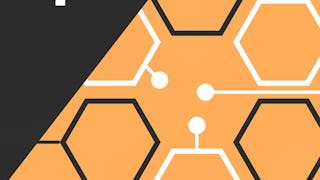If there is a shortcut to becoming a Data Scientist, then learning to think and work like a successful Data Scientist is it. In this course, you will learn and then apply this methodology that you can use to tackle any Data Science scenario. You’ll explore two notable data science methodologies, Foundational Data Science Methodology, and the six-stage CRISP-DM data science methodology, and learn how to apply these data science methodologies. Most established data scientists follow these or similar methodologies for solving data science problems.

Enjoy unlimited growth with a year of Coursera Plus for $199 (regularly $399). Save now.

Data Science Methodology
This course is part of multiple programs.


Instructors: Alex Aklson
359,490 already enrolled
Included with
(20,998 reviews)
Recommended experience
What you'll learn
Describe what a data science methodology is and why data scientists need a methodology.
Apply the six stages in the Cross-Industry Process for Data Mining (CRISP-DM) methodology to analyze a case study.
Evaluate which analytic model is appropriate among predictive, descriptive, and classification models used to analyze a case study.
Determine appropriate data sources for your data science analysis methodology.
Skills you'll gain
Details to know

Add to your LinkedIn profile
See how employees at top companies are mastering in-demand skills

Build your subject-matter expertise
- Learn new concepts from industry experts
- Gain a foundational understanding of a subject or tool
- Develop job-relevant skills with hands-on projects
- Earn a shareable career certificate

There are 4 modules in this course
In this module, you will discover what makes data science interesting, learn what a data science methodology is, and why data scientists need a data science methodology. Next, you’ll gain more in-depth knowledge of the first two data science methodology stages: Business Understanding and Analytic Approach. You’ll discover how to identify considerations and steps needed to define the data requirements for decision tree classification during the Data Requirements stage. Next, learn about the processes and techniques data scientists use to assess data content, quality, and initial insights and how data scientists manage data gaps. Round out this week with practical hands-on experience learning how to approach the Business Understanding and the Analytic Approach stage tasks and the Data Requirements and Collection stage tasks for any data science problem.
What's included
6 videos3 readings4 assignments1 app item7 plugins
In this module, you will learn what data scientists do when their tasks and goals are to understand, prepare, and clean the data. You’ll examine the purposes, characteristics, and goals of the data modeling process. You’ll also explore how to prepare a data set by handling missing, invalid, or misleading data. Then check out the hands-on labs where you can gain experience completing tasks relevant to the Data Understanding, Data Preparation, and Modeling and Evaluation stages. You’ll be able to apply the skills you learn to future data science problems.
What's included
6 videos4 assignments2 app items4 plugins
When you complete this module, you’ll be able to describe the deployment and feedback stages of the data science methodology. You’ll learn how to assess a data model’s performance, impact, and readiness. You’ll be able to identify the stakeholders who usually contribute to model refinement. You’ll also be able to explain why deployment and feedback should be an iterative process.To complete your hands-on lab experience, you’ll devise a business problem to solve using data related to email, hospitals, or credit cards. You’ll demonstrate your understanding of data science methodology by applying it to a given problem. You’ll construct responses that address each phase of the CRISP-DM based on a chosen business problem. After submitting your work, your submission will be AI-graded, providing fast, precise, and constructive feedback.
What's included
4 videos2 assignments2 plugins
Before completing your final project, learn how CRISP-DM data science methodology compares to John Rollins’ foundational data science methodology. Then, apply what you learned to complete a peer-graded assignment using CRISP-DM data science methodology to solve a business problem you define. You'll first take on both the client and data scientist role and describe how you would apply CRISP-DM data science methodology to solve the business problem. Then, take on the role of a data scientist and apply your knowledge of CRISP-DM data methodology stages to describe how you would solve the business problem. After you submit your assignment, your submission will be AI-graded, providing fast, precise, and constructive feedback. Let's get started!
What's included
1 video4 readings1 assignment1 peer review1 app item2 plugins
Earn a career certificate
Add this credential to your LinkedIn profile, resume, or CV. Share it on social media and in your performance review.
Offered by
Explore more from Data Analysis
 Status: Preview
Status: PreviewCoursera
 Status: Free Trial
Status: Free Trial Status: Free Trial
Status: Free Trial
Why people choose Coursera for their career




Learner reviews
20,998 reviews
- 5 stars
71.77%
- 4 stars
21.04%
- 3 stars
4.78%
- 2 stars
1.51%
- 1 star
0.87%
Showing 3 of 20998
Reviewed on May 16, 2021
A bit more complex than what I would have hoped, but the material is still digestible. I think this course could be improve if the lecturer slow down a bit and spend more time on each topic
Reviewed on Nov 29, 2019
This was a clear and concise overview of the methodology and using the case study really helped (although sometimes it got a bit advanced considering this comes before actually learning models).
Reviewed on Apr 14, 2020
It's a very good course for getting the basic idea of the methodology of data science. It will help to get grip on how to proceed to a problem in a systematic manner for getting good results.

Open new doors with Coursera Plus
Unlimited access to 10,000+ world-class courses, hands-on projects, and job-ready certificate programs - all included in your subscription
Advance your career with an online degree
Earn a degree from world-class universities - 100% online
Join over 3,400 global companies that choose Coursera for Business
Upskill your employees to excel in the digital economy
Frequently asked questions
To access the course materials, assignments and to earn a Certificate, you will need to purchase the Certificate experience when you enroll in a course. You can try a Free Trial instead, or apply for Financial Aid. The course may offer 'Full Course, No Certificate' instead. This option lets you see all course materials, submit required assessments, and get a final grade. This also means that you will not be able to purchase a Certificate experience.
When you enroll in the course, you get access to all of the courses in the Certificate, and you earn a certificate when you complete the work. Your electronic Certificate will be added to your Accomplishments page - from there, you can print your Certificate or add it to your LinkedIn profile.
More questions
Financial aid available,
¹ Some assignments in this course are AI-graded. For these assignments, your data will be used in accordance with Coursera's Privacy Notice.


